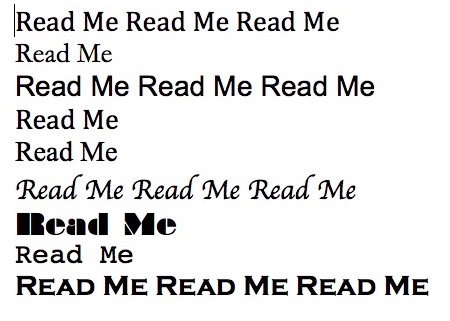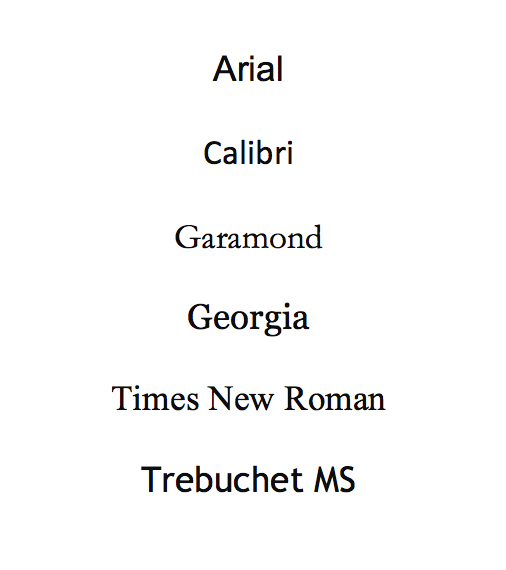Your resume is a communication tool that tells people why they should refer, recommend or hire you. It is not a cruel ritual meant to torment you, and neither should you torment your readers.
When smart people write bad resumes, they waste weeks and months wondering why the phone doesn’t ring. This unhappy result further leads them to putting their energies into thinking about their own situations and insecurities instead of the greater perspective of how to best present themselves to achieve their goals.
Your resume is a communication tool that tells people why they should refer, recommend or hire you. It is not a cruel ritual meant to torment you, and neither should you torment your readers.
In the countless resumes that I have reviewed over the years, and in those I have rewritten for clients, there are a few major flaws that stand out so often they merit their own post. These common resume mistakes aren’t limited to the folks who are unsuccessful in their careers. In fact, they are so ubiquitous among those who “should know better” that it prompts me to ask: why do smart people write dumb resumes?

Beyond poor writing and lazy proofreading, here are three of the most common culprits in bad resume land:
The “Sherman Tank” Resume
Otherwise known as “let me put all of my accomplishments down on a page so I don’t miss anything someone might want.” An alternate description of this type of resume could be ClutterFest. The Sherman Tank or ClutterFest writer thinks he or she is sharing a diverse celebration of achievements, while the reader feels like it’s an exercise in sorting prized antiques in someone else’s dusty attic.
The Sherman Tank resume – durable and bulletproof but too bulky to zip around curves – doesn’t put a candidate in the best light. In fact, it doesn’t cast any light in any direction at all, so no depth or differentiation can be seen, only too many words on a page (and often in too tiny a font).
Put yourself in the shoes of the reader. How much work would you want to put into deciphering if a candidate was a good fit for your open role (especially if it seems that he or she hasn’t bothered to do it either)? How hard would you squint to read past the first few words?
In my most extreme example to date, I turned a client’s five page resume into two pages.
Truth be told, she was an awesome candidate for her target job. She just couldn’t figure out how to edit her own experience or what to emphasize, so a reader couldn’t “get there” to see it. She had never given thought to what an employer might be looking for, focused only on the trees in her own forest. In addition, because of her inability to edit her own experience, she had included some very detracting information alongside the helpful points, which further diluted the effectiveness of her message.
The “Barely There” Resume
The opposite of the Sherman Tank is the Barely There resume. When I have worked with clients who have this type of resume, I spend a lot of time asking the same question: “And what else did you do?” They have great experience, but somehow they can’t seem to get it down on the page. They leave out key details, such as skill sets they possess – and can demonstrate – that are important for their target job.
Like the Sherman Tank writers, who are focused on their own experience, the Barely There writers have not put themselves in the position of an employer and asked what they can offer that would be valuable for the target position. In one recent case with a client, for example, we pulled out four different skill sets that she would need for a job transition and were not on her resume, without stretching beyond her legitimate experience.
In that case, the client hadn’t presented herself as a well-rounded generalist with a specialization, which was required for her target positions, because her current firm had pushed her in a single direction without valuing all she could offer. Although this push and the associated stress were the major reasons the candidate was seeking a change, she had internalized the pigeonholing by her current firm and was unable to see beyond it when it came planning (and drafting) her great escape.
The “Showed Up and Did My Job” Resume
A corollary to the Barely There is the resume that simply lists what a person did at a job, with no thought to prioritization or differentiation from other candidates in similar roles. Unlike the Barely There, which lacks enough detail, the Showed Up and Did My Job resume might be an appropriate length, and even look “right” at first glance, but ultimately the narrative is not compelling enough to prompt the next step: a job interview.
In many cases, my clients who have a Showed Up and Did My Job resume list tasks that were simply “part of the job” but indicate nothing that showcases particular sets of skills. As we talk through their major projects and accomplishments on the job, or how they pushed the envelope in the position, they realize that the resume is missing critical points because they had not put enough thought into the value they actually bring, as opposed to the tasks that a job entails. Often these clients are looking for a new job because the current one feels like they are on autopilot. But having a Showed Up and Did My Job resume is like putting your centerpiece job-search marketing document on autopilot navigation as well, with a few missed stop signs and on-ramps along the way.
If you are reading this post closely, you see a theme emerging:
Smart people write dumb resumes because they too heavily rely on their intelligence and natural instincts in the writing process (which serve them so well in other contexts), hoping that the reader will fill in the gaps when needed.
Then they waste weeks and months wondering why the phone doesn’t ring, putting their energies into thinking about their own situations and insecurities instead of the greater perspective of how to best present themselves to achieve their goals.
Instead, the smart resume writer steps back to reframe his or her experience so that the reader (recruiter, potential interviewer, friend of a friend, etc.) is enticed and excited about the potential fit between the individual as a candidate and the new role.
As I consistently say to clients, your resume is not an obituary, it’s a marketing document. I make this point with the full knowledge that these words may take some time to resonate:
Smart people can write smart resumes by thinking of them in terms of what the resume vehicle is meant to do – transport them from Point A to Point B – rather than getting caught up in their own discomfort with self-marketing or treating the resume as a retrospective or roadmap of their careers to date.
In short, writing is only the final iteration of creating an effective resume. Find your target, take aim, gather your arrows (of experience) and then write.
This post originally appeared on LinkedIn Pulse as “Why Do Smart People Write Dumb Resumes?” Photo credit: Adobe Images.
 For more LinkedIn tips, click here.
For more LinkedIn tips, click here.




